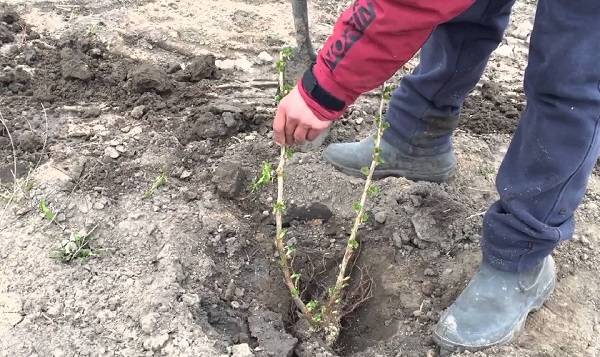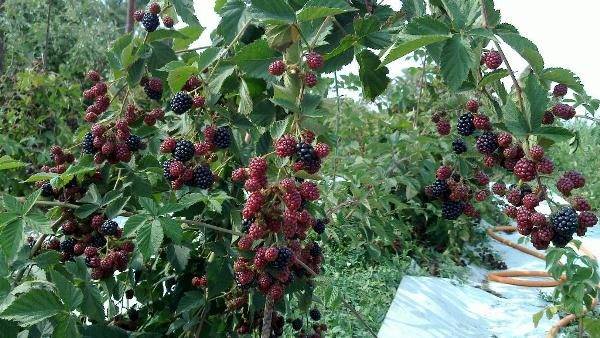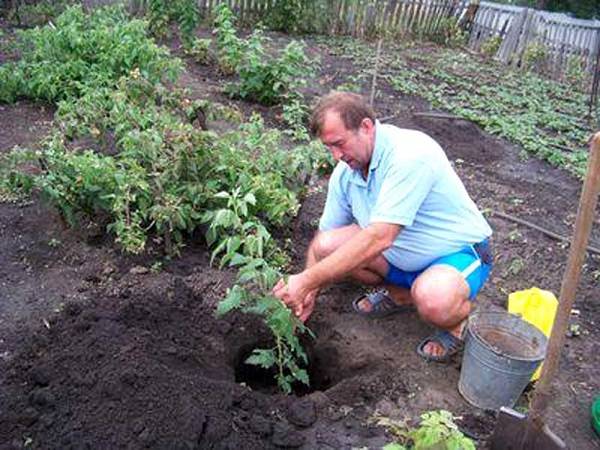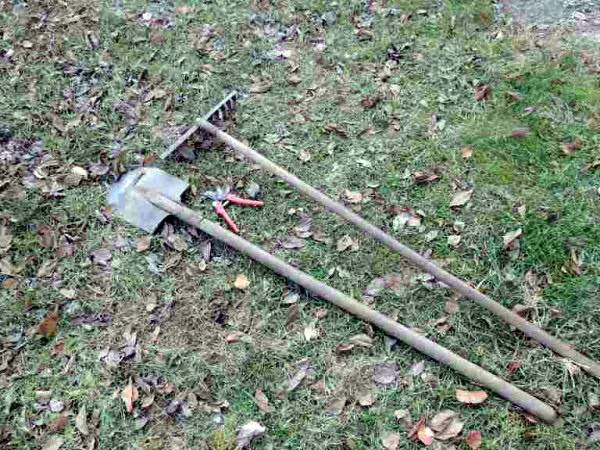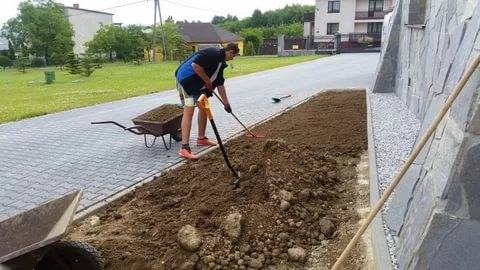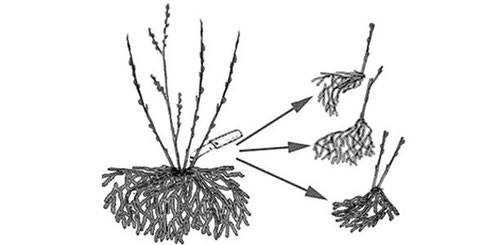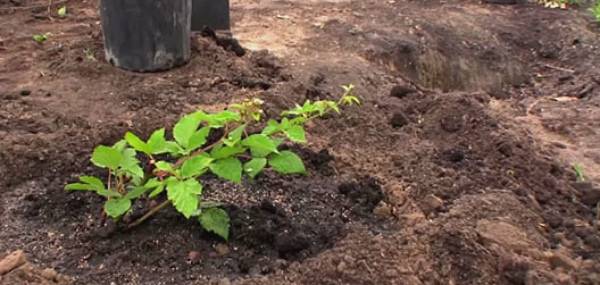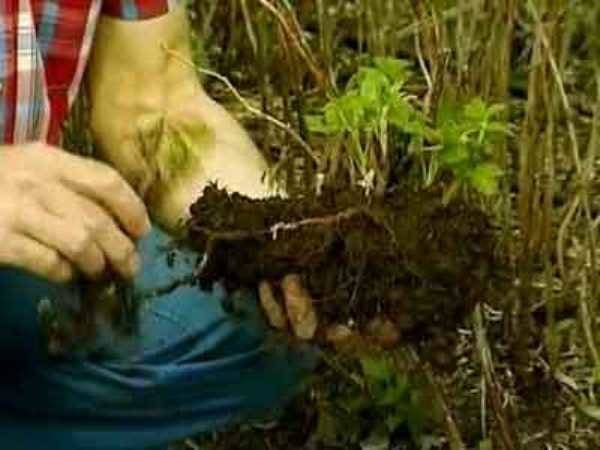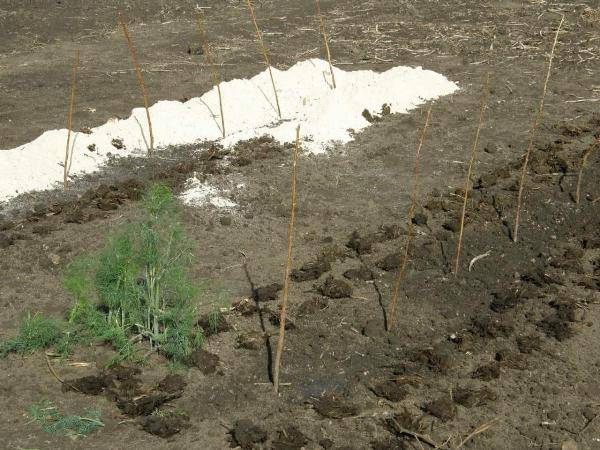Content
- 1 Why transplant blackberries to a new place
- 2 When is it better to transplant blackberries: in spring or autumn
- 3 When can you transplant blackberries to another place
- 4 A set of preparatory measures
- 5 Transplanting blackberries to a new place in the spring
- 6 Transplanting blackberries to a new place in the fall
- 7 Is it possible to transplant blackberries in the summer
- 8 Caring for blackberries after transplanting
- 9 Conclusion
In connection with the redevelopment of the site or for other reasons, the plants are transplanted to another place. So that the culture does not die, you need to choose the right time, prepare the site and the seedling itself. Now we will look at how to transplant blackberries and provide the plant with proper care for further development.
Why transplant blackberries to a new place
Wild blackberries can grow in one place for up to 30 years. The cultivated plant after 10 years must be transplanted to another place. The process consists of carefully digging out the bush, pruning all branches, and carrying the root system with a lump of earth. The plant is planted in a new hole so that the root collar remains at the same level.
The main purpose of the transplant is to renew the bush. The method of division can be used to multiply your favorite variety. A transplant may be required simply in case of redevelopment of the yard or, if necessary, to divide a huge overgrown bush.
When is it better to transplant blackberries: in spring or autumn
Blackberries are transplanted in spring and autumn. However, each season has its merits and demerits. The optimal transplant time is determined taking into account the climatic conditions of the region.
The advantages of transplanting in early spring are the guaranteed survival rate of the seedling. The option is more suitable for the northern regions, since a plant transplanted in autumn does not have time to take root before frost. The disadvantage of a spring transplant is the difficulty of accurately determining the timing. It is necessary to catch that short period in which the process of sap flow has not yet begun, and the earth has already thawed out after winter.
A positive feature of the autumn transplant is the rooting of the seedling. In early spring, the plant grows quickly. However, the blackberries need to be transplanted two months before the expected date of the onset of frost. For the winter, the seedling is well insulated. For the northern regions, the autumn method of transplanting is not available, and this is a big drawback. The dignity of the method is fully appreciated by the inhabitants of the south.
When can you transplant blackberries to another place
The specific timing of transplanting in the spring is determined by weather conditions. Usually falls in April. In May, the blackberry should not be touched any more. The plant begins an active phase of sap flow.
The autumn transplant time falls at the end of September - beginning of October, provided that there are no early frosts in the region.
A set of preparatory measures
The transplant process is conventionally divided into two stages: preparatory and basic work. The actions are the same for thorny and thornless blackberry varieties.
Choosing a suitable site
The site for transplanting is selected according to the same rules followed when planting a young seedling. A sunny place, protected from northern winds, is chosen for the plant. It is advisable to choose a hill, but make a depression for the seedling itself. On the mound, the blackberries will not be flooded by rain and melt water, and in the hole under the plant water will be better retained during watering.
The site is chosen with loamy or sandy loam soil.You can transplant a crop to a garden bed where any garden crops grew last season, except for nightshades and berries.
Soil preparation
In order for the transplanted bush to take root, you need to carefully prepare the soil:
- conduct a soil acidity test and, if necessary, bring it to neutral indicators;
- the site is dug to a depth of 50 cm;
- weed roots are picked from the ground;
- a 10 cm layer of compost and a 3 cm layer of any crushed organic matter are evenly spread over the garden bed: leaves, sawdust;
- calcium, phosphorus, magnesium are added from mineral fertilizers;
- all layers are dug up again together with the soil;
- the garden bed is poured abundantly with water, covered with an 8 cm layer of mulch to accelerate the process of overheating of organic matter;
- a trellis is installed in the place of the proposed planting of the seedling.
When preparing the soil for transplanting blackberries, the acidity is increased by adding ferrous sulfate at the rate of 500 g / 10 m2... You can add 300 g of sulfur to a similar area, but the process will go slower. Lime is added to lower the acidity.
Preparation of planting material
To transplant the blackberry to another location, you first need to dig it up. They try to dig in an adult bush as deep as possible with a shovel from all sides. The plant is removed from the soil so that a clod of earth is preserved. In this state, the blackberries are transferred to another place.
The preparation of an adult bush begins with trimming the aerial part. You cannot leave stumps from old branches, pests will start in them and the plant will disappear.
If a large bush is transplanted, then it is propagated by the method of division. The process consists of the following steps:
- the plant to be transplanted is dug in from all sides, removed from the ground, gently kneaded a lump of soil to free the roots;
- the bush is divided with a sharp knife so that on each cut off seedling there are 2-3 branches and 1 underground bud on the roots;
- The divided planting material is planted in prepared holes.
The division of the bush during transplantation can be done in the spring immediately after the snow melts or in the fall 2 months before the onset of frost.
Transplanting blackberries to a new place in the spring
When transplanting, the mother bush can be propagated not only by division, but also by root processes. The latter method involves planting seedlings from young growth. Regardless of the method of reproduction, the transplant is carried out in the following order:
- Before the start of the transplant, they plan the location of the plants in the garden. Blackberries are planted in rows. A space of up to 2 m is left between the seedlings of upright varieties.For a creeping crop, the distance is increased to 3 m.The row spacing also depends on the type of bush and ranges from 1.8 to 3 m.
- If young growth is used for transplantation, then a hole is dug 50 cm deep, with a diameter of the size of the root. For an old bush, a hole is dug according to the dimensions of the root system. It is better to transplant blackberries in trenches 50 cm deep, dug along the length of the beds.
- During plant transplantation, 1 bucket of compost, 100 g of mineral complex fertilizers are added to each well, but it is better to do with one organic matter.
- The bush to be transplanted is undermined from all sides. In an adult plant, the root extends far into the depths of the earth. It cannot be retrieved. The rhizome is simply chopped off with a shovel bayonet.
- The blackberry is carefully transferred, immersed in a new hole, covered with earth.
After transplanting, the plant is watered abundantly, maintaining moisture until complete engraftment. After watering, the near-trunk soil is covered with mulch
Transplanting blackberries to a new place in the fall
Autumn transplanting begins after the end of fruiting. It should be about two months before the onset of frost. During this time, the transplanted plant will have time to take root. The autumn and spring transplanting process is identical. The only difference is the protection of the seedling from frost. After the autumn transplant, the near-trunk soil is covered with a thick layer of mulch.In addition, before the onset of winter, they organize a reliable shelter made of spruce branches or non-woven material.
Not the whole bush can be transplanted in the fall, but young shoots from the roots. They are called offspring. Young shoots are the best option for preserving and breeding the variety, as it eliminates the difficult process of replanting an old bush.
Many varieties of creeping blackberries do not produce offspring. In order not to transplant the old bush, the culture is propagated by layering. In August, the blackberry lash is bent to the ground, covered with soil, leaving the top. After a month, the cuttings will take root. The resulting seedling is separated from the bush in September and transplanted to another place.
Is it possible to transplant blackberries in the summer
Theoretically, a summer blackberry transplant can be carried out, but there is no guarantee of 100% plant survival. For testing, it is better to choose a variety that is not a pity. In order for the summer transplant to be successful, the following rules are followed:
- transplant in the early morning or late evening;
- all work is done as quickly as possible;
- immediately after the transplant, a shading structure is installed over the blackberry;
- the transplanted plant is watered abundantly daily.
In summer, heat is destructive for a dug plant. If the blackberry is not planted right away in a permanent place, it will quickly wither.
Caring for blackberries after transplanting
Caring for a transplanted plant is no different, as for other blackberry bushes. Initially, you need abundant watering. You can't rush to feed. Mineral fertilizers can burn the root system that has not taken root. Over time, after adaptation in a new place, you can begin to introduce organic matter.
Caring for transplanted blackberries requires standard actions:
- In autumn and spring, pruning and shaping of the bushes are carried out. Blackberry whips are tied to a trellis. For the winter, the stems are bent to the ground, covered with spruce branches or other insulation.
- In summer, blackberries are sometimes affected by a gall mite. You can fight the pest with chemicals or garlic infusion.
- After the heat disappears on warm evenings, the blackberries are irrigated with cool water. Sprinkling hardens young stems.
- The following spring, after transplanting, the blackberries are fed with potassium at the time of budding.
The transplanted plant initially needs to be properly cared for to establish itself quickly.
More information about transplanting blackberries is shown in the video:
Conclusion
A transplant is no different from a landing. The only negative is that there is a threat that the old bush will not take root if the roots have been badly damaged.
